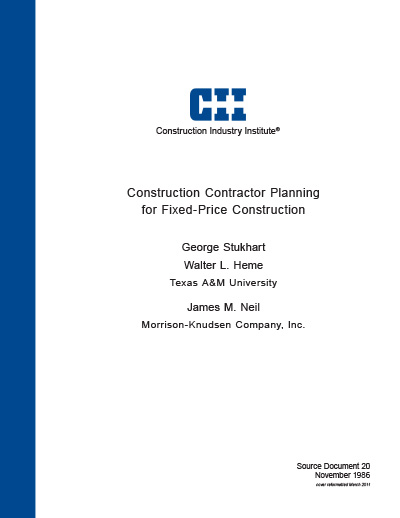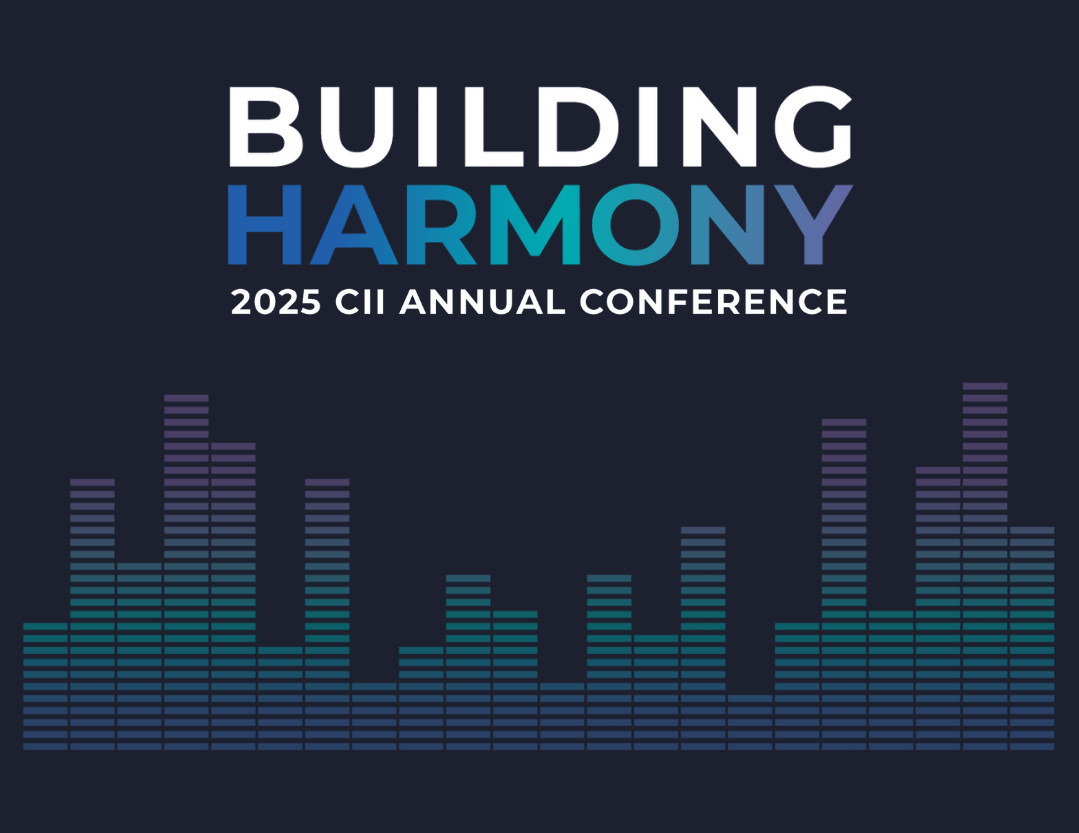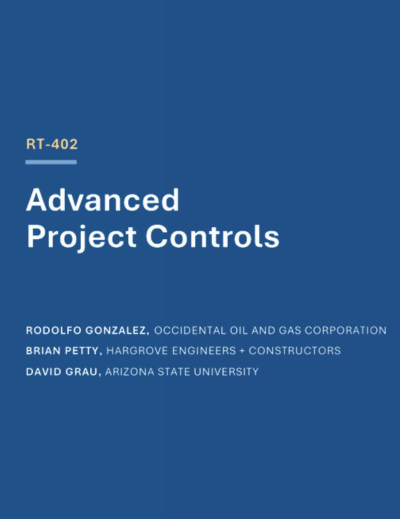
Construction Contractor Planning for Fixed-Price Construction
Good planning has proven to be an essential element for successful projects and successful companies, whether construction or otherwise. Planning is the first element in the cycle of planning, controlling, and feedback. Without a plan, there is no basis for control. And, it is feedback from past projects that provides a company’s best reference for future planning. Good planning is a characteristic of proactive management.
Good planning starts with the establishment of a planning culture in a company. This culture recognizes that planning is a team effort involving management at all levels. Policy plans establish permanent and semi-permanent guidelines for day-to-day operations of a company and provide the framework for project-specific plans adapted from those guidelines. Strategic plans, updated periodically, chart the long-range course of the company. Tactical plans provide the short range detail. Operational plans target on a given opportunity.
Construction projects are among the most complicated and challenging of projects to plan and execute in the industrial world. This complexity should be reason enough to endorse the concept of detailed planning of every project. Yet, good planning is often compromised by contractors in the interest of saving time and money. Unfortunately, the record shows the consequences of poor planning to be lost time and money.
Among the family of contract types under which construction is executed, the most challenging is the fixed-price contract. This is so because the contractor really has the burden of determining the full scope of the project in terms of items with cost implications. Further, the contractor has the burden of identifying and evaluating project risks. In planning a fixed-price construction project, the contractor faces two milestones. The first is the bid due date at which time the pricing and other bid submittals must be complete. The second is the mobilization date at which time planning must be complete enough to enable efficient initiation of construction.
These two milestones must be treated as successive events in a chain of planning phases, each phase building upon and refining the planning of the previous phase.
Suggested planning process includes:
- Establish set of goals
- Formulate alternative plans
- Establish criteria
- Selecting alternative
- Implement alternative
- Develop feedback loop
Planning Guidance: Since limited time is available for planning and it would be very costly to plan each project from scratch, a company must maintain a family of data bases, policy documents, standard procedures, model plans and checklists to standardize and streamline the planning process. (SD-20, p. 6)
Fluor’s study indicates two influencers of project success: (SD-20, p. 16)
- Quality and depth of early planning by the PM group
- Execution by a strong PM group
Subcontract success includes (SD-20, p. 37):
- Requesting quotations only from qualified, experienced, financially capable contractors
- Defining the scope of work in sufficient detail so that subcontractor rights and duties are clearly understood
- Requirements (specs, flow downs)
- Milestone dates for start and completion of work
- Deliverables, payment, definitions, insurance, guarantees
A major component of the planning process is the Project Execution Plan, whose many parts include the following: (SD-20, p. 47)
- Project organizational structure
- Work breakdown structure
- Subcontract plan
- Procurement plan
- Site development plan
Source Document 20, Construction Contractor Planning for Fixed-Price Construction
This source document includes many useful tools and checklists including:
- Pre-Bid Site Investigation Checklist (Appendix A)
- Subcontractor/Vendor Checklist (Appendix B)
- Materials Management Checklist (Appendix C)
- Contractor Facilities and Services Checklist (Appendix D)
- Project Controls Checklist (Appendix E)
- Checklist for Evaluating Risk for Fixed-Price Contracts (Appendix F)
- Quality Control Plan (Appendix G)
- Loss Control Plan (Appendix H)
- Project Responsibility Matrix (p. 43)
- Project Execution Plan (p. 47)


